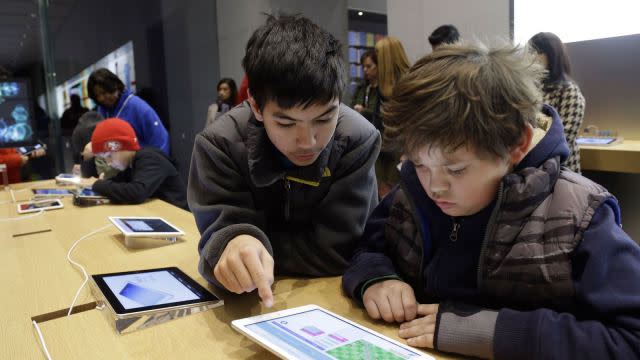How to tell if your child has a future in computer science

New research shows what many people in the computer science field already know—a passion for computers starts early in life. So how can you tell if your son or daughter is a budding programmer?
There are a few common traits that future coders and developers have in common during their formative years, according to a July 2015 survey of more than 2,200 developers who use Code School, which offers online courses in programming.
For starters, most coders took an interest in computers before the age of 16 and that passion stayed with them.
And they got good grades. More than two-thirds of male coders and 81% of female coders reported earning grade point averages (GPAs) of 3.6 or higher (out of a possible 4.0) in high school.
But don’t fret if your kid is not an honors student. Of those polled, the programmers who posted lower high school GPAs often brought in more money than their over-achieving peers. More than 62% of developers who had high school GPAs of 2.9 or lower took home $100,000 or more a year compared to 41% of those who had GPAs of 3.6 or higher, the survey found.
Despite a shared passion for computing, men and women in the field were drastically different during their youth. Men, for example, procrastinated more on school assignments and spent more time in front of computer screens while growing up, forgoing other activities like sports and music. Women, on the other hand, put hobbies like music, theater, or choir ahead of computers. They were more likely to complete a college degree than men as well.
Women also tend to develop an interest for computers later than men. A majority of male coders got into computers when they were 15 or younger, while women formed an interest in technology around the age of 16.
The survey did not examine the reasons why women were later bloomers, but Gregg Pollack, CEO and founder of Code School, believes their passions were channelled elsewhere. “I suspect that the interest for women was always there, but manifested itself in different ways through music and other performing arts,” Pollack told Quartz in an email.
The landscape of computer science has shifted a lot in the last few years. Social movements like #ILookLikeAnEngineer are changing the way we think about people in technical fields and programs like Girls Who Code and Hour of Code are helping kids build computing skills earlier in life. But there’s still a long way to go in fostering a love of computers among children, given how relatively little they’re taught in schools.

Sign up for the Quartz Daily Brief, our free daily newsletter with the world’s most important and interesting news.
More stories from Quartz:

 Yahoo Finance
Yahoo Finance 